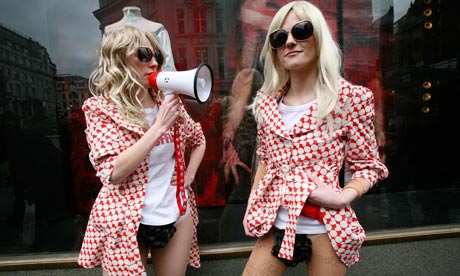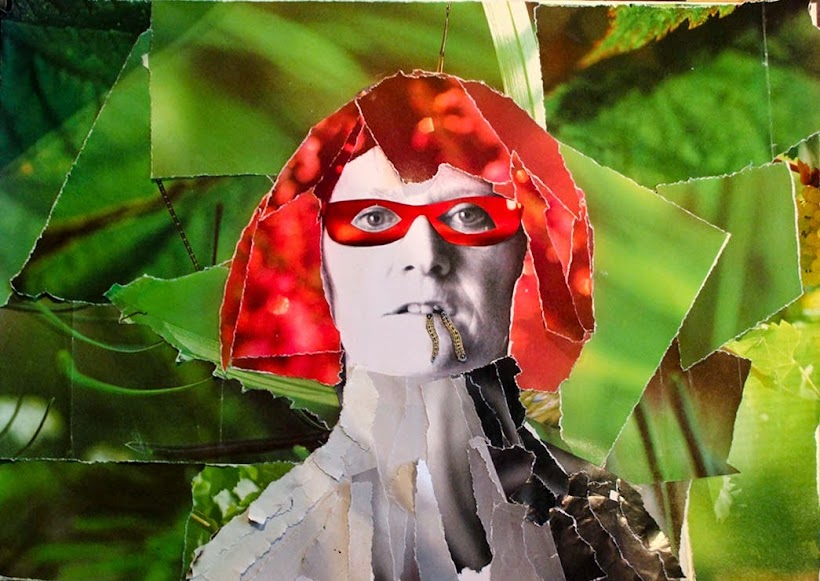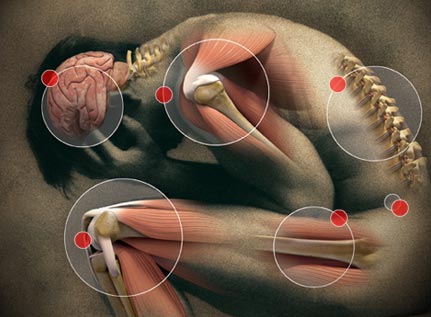dinsdag 27 december 2011
A Victim Treats His Mugger Right
Julio Diaz has a daily routine. Every night, the 31-year-old social worker ends his hour-long subway commute to the Bronx one stop early, just so he can eat at his favorite diner.
But one night last month, as Diaz stepped off the No. 6 train and onto a nearly empty platform, his evening took an unexpected turn.
He was walking toward the stairs when a teenage boy approached and pulled out a knife.
"He wants my money, so I just gave him my wallet and told him, 'Here you go,'" Diaz says.
As the teen began to walk away, Diaz told him, "Hey, wait a minute. You forgot something. If you're going to be robbing people for the rest of the night, you might as well take my coat to keep you warm."
The would-be robber looked at his would-be victim, "like what's going on here?" Diaz says. "He asked me, 'Why are you doing this?'"
Diaz replied: "If you're willing to risk your freedom for a few dollars, then I guess you must really need the money. I mean, all I wanted to do was get dinner and if you really want to join me ... hey, you're more than welcome.
"You know, I just felt maybe he really needs help," Diaz says.
Diaz says he and the teen went into the diner and sat in a booth.
"The manager comes by, the dishwashers come by, the waiters come by to say hi," Diaz says. "The kid was like, 'You know everybody here. Do you own this place?'"
"No, I just eat here a lot," Diaz says he told the teen. "He says, 'But you're even nice to the dishwasher.'"
Diaz replied, "Well, haven't you been taught you should be nice to everybody?"
"Yea, but I didn't think people actually behaved that way," the teen said.
Diaz asked him what he wanted out of life. "He just had almost a sad face," Diaz says.
The teen couldn't answer Diaz — or he didn't want to.
When the bill arrived, Diaz told the teen, "Look, I guess you're going to have to pay for this bill 'cause you have my money and I can't pay for this. So if you give me my wallet back, I'll gladly treat you."
The teen "didn't even think about it" and returned the wallet, Diaz says. "I gave him $20 ... I figure maybe it'll help him. I don't know."
Diaz says he asked for something in return — the teen's knife — "and he gave it to me."
Afterward, when Diaz told his mother what happened, she said, "You're the type of kid that if someone asked you for the time, you gave them your watch."
"I figure, you know, if you treat people right, you can only hope that they treat you right. It's as simple as it gets in this complicated world."
Produced for Morning Edition by Michael Garofalo - March 28, 2008
dinsdag 20 december 2011
13 Foods that Fight Pain
While many foods taste great, they are also powerful healers in a
vibrant multicolor disguise. The best healing remedies also taste
fabulous (I can’t say that about any prescription medications). Plus,
foods won’t cause the nasty common side effects that most drugs cause.
1. Cherries
Muraleedharan Nair, PhD, professor of natural products and chemistry at Michigan State University, found that tart cherry extract is ten times more effective than aspirin at relieving inflammation. Only two tablespoons of the concentrated juice need to be taken daily for effective results. Sweet cherries have also been found to be effective.
Muraleedharan Nair, PhD, professor of natural products and chemistry at Michigan State University, found that tart cherry extract is ten times more effective than aspirin at relieving inflammation. Only two tablespoons of the concentrated juice need to be taken daily for effective results. Sweet cherries have also been found to be effective.
2. Blackberries 3. Raspberries 4. Blueberries and 5. Strawberries
Dr. Nair later found the same anti-pain compound in berries like blackberries, raspberries, blueberries and strawberries
Dr. Nair later found the same anti-pain compound in berries like blackberries, raspberries, blueberries and strawberries
6. Celery and Celery Seeds
James Duke, Ph.D., author of The Green Pharmacy, found more than 20 anti-inflammatory compounds in celery and celery seeds, including a substance called apigenin, which is powerful in its anti-inflammatory action. Add celery seeds to soups, stews or as a salt substitute in many recipes.
James Duke, Ph.D., author of The Green Pharmacy, found more than 20 anti-inflammatory compounds in celery and celery seeds, including a substance called apigenin, which is powerful in its anti-inflammatory action. Add celery seeds to soups, stews or as a salt substitute in many recipes.
7. Ginger
Ginger reduces pain-causing prostaglandin levels in the body and has been widely used in India to treat pain and inflammation. A study by Indian researchers found that when people who were suffering from muscular pain were given ginger, they all experienced improvement. The recommended dosage of ginger is between 500 and 1,000 milligrams per day. If you’re taking medications, check with your health practitioner for possible herb-drug interactions.
Ginger reduces pain-causing prostaglandin levels in the body and has been widely used in India to treat pain and inflammation. A study by Indian researchers found that when people who were suffering from muscular pain were given ginger, they all experienced improvement. The recommended dosage of ginger is between 500 and 1,000 milligrams per day. If you’re taking medications, check with your health practitioner for possible herb-drug interactions.
8. Turmeric
Turmeric (curcuma longa) is the yellow spice commonly used in Indian curries. In research it has been shown to be a more effective anti-inflammatory than steroid medications when dealing with acute inflammation. Its main therapeutic ingredient is curcumin. Research shows that curcumin suppresses pain through a similar mechanism as drugs like COX-1 and COX-2 inhibitors (without the harmful side effects). Choose a standardized extract with 1500 mg of curcumin content per day.
Turmeric (curcuma longa) is the yellow spice commonly used in Indian curries. In research it has been shown to be a more effective anti-inflammatory than steroid medications when dealing with acute inflammation. Its main therapeutic ingredient is curcumin. Research shows that curcumin suppresses pain through a similar mechanism as drugs like COX-1 and COX-2 inhibitors (without the harmful side effects). Choose a standardized extract with 1500 mg of curcumin content per day.
9. Salmon 10. Mackerel and 11. Herring
Many fatty fish like salmon, mackerel and herring also contain these valuable oils. Omega-3s convert in the body into hormone-like substances that decrease inflammation and pain. According to Dr. Alfred D. Steinberg, an arthritis expert at the National Institute of Health, fish oil is an anti-inflammatory agent. Fish oil acts directly on the immune system by suppressing 40 to 55 percent of the release of cytokines, compounds known to destroy joints. Many other studies also demonstrate that eating moderate amounts of fish or taking fish oil reduces pain and inflammation, particularly for arthritis sufferers.
Many fatty fish like salmon, mackerel and herring also contain these valuable oils. Omega-3s convert in the body into hormone-like substances that decrease inflammation and pain. According to Dr. Alfred D. Steinberg, an arthritis expert at the National Institute of Health, fish oil is an anti-inflammatory agent. Fish oil acts directly on the immune system by suppressing 40 to 55 percent of the release of cytokines, compounds known to destroy joints. Many other studies also demonstrate that eating moderate amounts of fish or taking fish oil reduces pain and inflammation, particularly for arthritis sufferers.
12. Flax Seeds and Flax Oil
Freshly-ground flax seeds and cold-pressed flax oil, contain plentiful amounts of fatty acids known as Omega-3s. Do not cook with flax oil otherwise it will have the opposite effect-irritating the body’s tissues and causing pain.
Freshly-ground flax seeds and cold-pressed flax oil, contain plentiful amounts of fatty acids known as Omega-3s. Do not cook with flax oil otherwise it will have the opposite effect-irritating the body’s tissues and causing pain.
13. Raw Walnuts and Walnut Oil
Raw walnuts and walnut oil also contain the same powerful Omega-3 fatty acids that fight pain and inflammation in the body.
Raw walnuts and walnut oil also contain the same powerful Omega-3 fatty acids that fight pain and inflammation in the body.
When it comes to pain, food really is the best medicine.
Source:
Dr Akilah El – Celestial Healing Wellness Center
The Natural Health and Holistic World According to Dr Akilah Elvrijdag 9 december 2011
The Muff March against 'designer vagina' surgery
On Saturday morning, women will march down Harley Street to protest against the pornification of our private parts
Viv Groskop · 08/12/2011 · guardian.co.uk

Kate O'Brien and Sinead King, members of the Muffia, in London in 2009. Photograph: Anna Gordon
"Keep your mitts off our muffs!" "I love my vagina!" "You've put my chuff in a huff!" These are some of the slogans of the Muff March taking place along London's Harley Street Saturday morning.
Its aim? To raise awareness of the increase in gynaecological cosmetic surgery – both on the NHS and in private clinics. The march, which has more than 300 supporters on Facebook, is organised by campaigning group UK Feminista and performance artists The Muffia, who dress up in nude bodysuits decorated with lavish pubic hair.
At its most modest, the Muff March is against the pornography-influenced obsession with removing pubic hair. But it's also about protesting against the sort of surgery that makes you cross your legs. Typical procedures on offer include labiaplasty (trimming or removing the labia) and vaginal rejuvenation (tightening – usually referred to by "designer vagina").
In the US this industry is worth $6.8m (£4.4m). In the UK the latest figures come from a 2009 report in the British Journal of Obstetrics and Gynaecology. It revealed that in 2008 the number of operations increased by 70% compared with the previous year: 1,118 labiaplasty operations on the NHS. (There were 669 in 2007 and 404 in 2006.) And that's just the NHS. The Harley Medical Group reported over 5,000 inquiries about cosmetic gynaecology last year, 65% for labial reduction.
Professor Linda Cardozo of King's College London recently warned of the risks of labiaplasty: permanent scarring, infections, bleeding and irritation. "The private sector is not recorded, audited or regulated. At least if you have it on the NHS you have to go through your GP and that's a gatekeeper." (Although one anonymous blogger writes on the NHS website: "I have flaps of skin everywhere and the whole thing is a total mess. I will never be able to be intimate again.")
I recently heard of a woman GP very concerned by the number of girls in their mid-teens coming to her worried about what their genitals looked like: she thought it was becoming an issue largely because of the fashion for shaving off pubic hair, which made them more self-conscious. Of course, there are rare cases where there is an underlying medical reason for this surgery, but they are just that, extremely rare. A doctor who has treated women seeking labiaplasty told me: "When you examine them, they are completely normal."
Some experts suggest this is a new form of body dysmorphic disorder. Others see it as a depressing but logical extension of the pornification of our culture. As it becomes more acceptable for young people to watch porn (where a "standardised" genital appearance is encouraged and many of the women have no pubic hair), so young women having their first sexual experiences are being measuring – and measuring themselves – against this weird porn "norm". As one woman who has sought surgery says: "I browsed through one of my brother's Playboys to see what the girls looked like. Some seemed to have very small or almost no labia."
In a world where not even your labia can ever be pretty enough, it's time to fight back. Forward march, muffs!
Abonneren op:
Posts (Atom)


